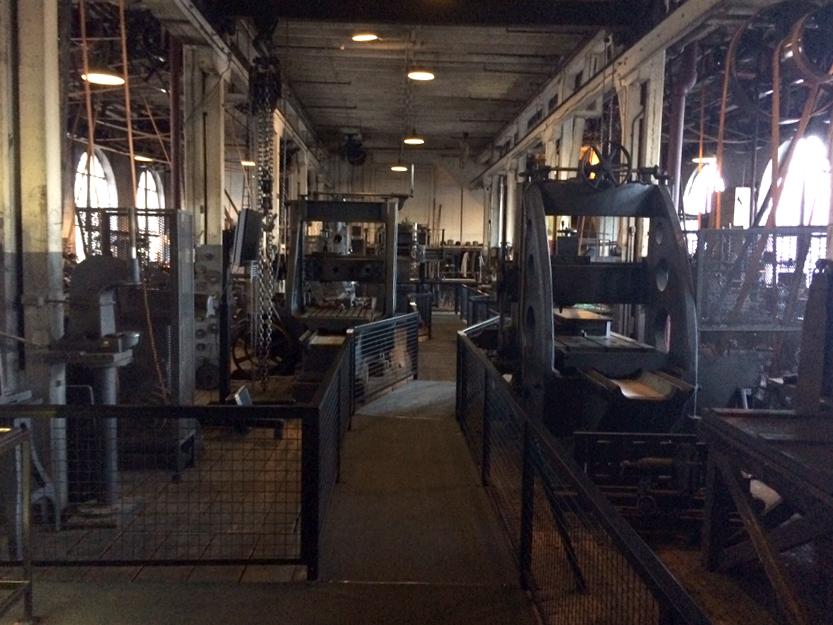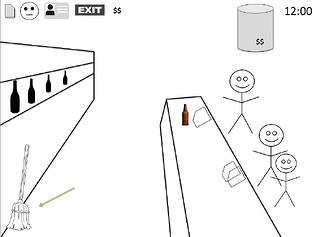Blog
Four Tips to Create the Perfectly Imperfect e-Learning Prototype
by Ethan Edwards, chief instructional strategist | @ethanaedwards In December I was scheduled to teach two ATD e-Learning Instructional Design ...


Be an Inventor: The Importance of Prototyping for e-Learning Design
By Ethan Edwards | January 06, 2015 | Custom Learning | 0 Comments

by Ethan Edwards, chief instructional strategist | @ethanaedwards
I n December I was scheduled to teach two ATD e-Learning Instructional Design Certificate Programs back-to-back in New York City, leaving me with a weekend to entertain myself. On Sunday afternoon I was lucky enough to take the train out to West Orange, New Jersey to pay a visit to Thomas Edison National Historical Park.
n December I was scheduled to teach two ATD e-Learning Instructional Design Certificate Programs back-to-back in New York City, leaving me with a weekend to entertain myself. On Sunday afternoon I was lucky enough to take the train out to West Orange, New Jersey to pay a visit to Thomas Edison National Historical Park.
The park preserves the laboratory that for forty years was the central workshop for the development of many of Edison’s most significant inventions, like the motion picture camera, improved phonographs, storage batteries, etc.
I can’t say I had anything more than superficial knowledge of Edison’s work prior to my visit, but the biggest surprise was to discover how much value Edison placed on prototyping. The biggest portion of his laboratory was dedicated to machinery for prototyping trial versions of new devices. Every manner of drill, plane, saw, vice, and press were available for use. A warehouse of every imaginable nut and screw and raw material gathered from around the world was maintained solely for crafting prototypes to test and improve ideas to offer the public. Prototypes were rigorously tested for how they would be used by everyday consumers long before they were put into production for commercial distribution. It was necessary to TEST ideas, not just assume that a device would work, or even if it did work, would end users benefit from it?
It was a great reminder of the importance of sketching and prototyping in tools when designing e-learning. We can’t know off hand what the optimal solution for a training problem is until we ask some “What if…?” questions and test our assumptions with real learners. We can be sure that blindly applying a solution for a previous problem is unlikely to be ideal. Yet that is so often what is done: designers use ineffective interaction formats simply because they are readily accessible in most authoring tools, and then churn out many hours of e-learning before even checking how the instruction will be received and whether it will be effective in any way. The limitations of the tools and materials at hand shouldn’t dictate the solution. Certainly the practicality of an implementation depends on the availability of resources, but if those limits are used as the driving force behind a design, we’ll never extricate ourselves from the morass of ineffective designs that we too often are mired in.
So as we move into the New Year, I encourage you to think of yourself as an inventor when you are engaging in the design portions of your process. Sketch and prototype your ideas before you begin detailed storyboards or extensive content writing. Put your ideas to the test—with colleagues and with end users—and then use what you learn to adjust your prototypes. While it is good to spend enough time to feel satisfied that you’ve considered the most promising alternatives, even if you devote just 1-2 days to this prototyping process, you will be sure to create a better end product.
Want to share this post? Here are some ready made tweets:
Click to Tweet: Thomas Edison knew the importance of #prototyping. Do you? http://hubs.ly/y0qmcc0 #elearningdesign
Click to Tweet: Prototyping is essential to invention and e-learning design! http://hubs.ly/y0qmcc0 #elearning #prototypes

About the Author: Ethan Edwards
Ethan Edwards draws from more than 30 years of industry experience as an elearning instructional designer and developer. He is responsible for the delivery of the internal and external training and communications that reflect Allen Interactions’ unique perspective on creating Meaningful, Memorable, and Motivational learning solutions backed by the best instructional design and latest technologies.
Comments
Would you like to leave a comment?
Related Blog Posts

By: Ethan Edwards | Nov, 2014
Category: Custom Learning, Strategic Consulting
.png?width=316&name=Copy%20of%20Services%20-%20On%20the%20Road%20w%20Ethan%20Edwards%20%20(3).png)
Blog
Prototyping in the [Learning] Renaissance
by Ethan Edwards, chief instructional strategist | @ethanaedwards In December I was scheduled to teach two ATD e-Learning Instructional Design ...
By: Ethan Edwards | Nov, 2022
Category: Custom Learning

Blog
Be a Superhero with SAM
by Ethan Edwards, chief instructional strategist | @ethanaedwards In December I was scheduled to teach two ATD e-Learning Instructional Design ...
By: Ethan Edwards | Aug, 2014
Category: Custom Learning, Strategic Consulting


